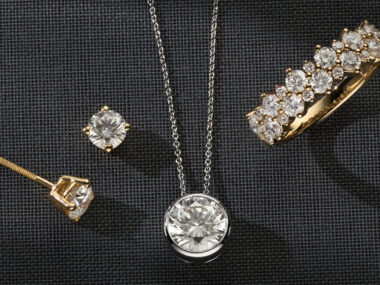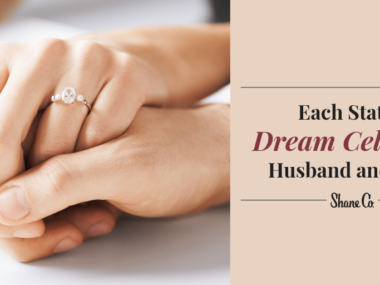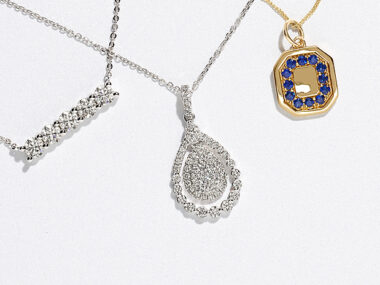Something old, something blue, white dresses and bridal parties – did you ever wonder where all of these wedding traditions came from? As it turns out, there’s an interesting origin story behind all of our favorite bridal customs.
Good luck charms
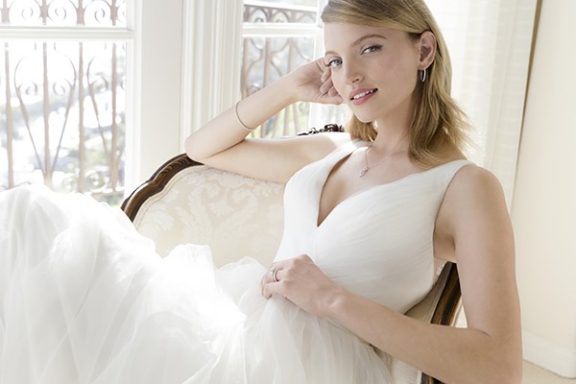
You’ve probably heard the traditional rhyme that talks about things a bride should wear on her wedding day. We looked into where this saying came from to find out why.
Something old: The idea of having something antique with you on your wedding day is meant to represent continuity and ties to the bride’s family and past. In days gone by, this good luck charm was also a way to ward off the evil eye and protect any future children of the couple.
Something new: This represents the couples’ new life together. It offers optimism for the future and allows the couple to bring something totally new into the ceremony as they embark on an exciting journey together.
Something borrowed: This item is meant to come from a happily married relative or friend, hopefully transferring some of those good vibes onto the married couple-to-be.
Something blue: The color blue stands for purity, faithfulness and love – some of the most important qualities we need for a successful marriage. Typically, brides wore a blue garter to ensure this tradition rang true, though in recent times brides have found many creative ways to incorporate their something blue into the big day.
A sixpence in your shoe: You may or may not have heard the traditional end to this rhyme, which includes keeping a coin in the bottom of the bride’s shoe as a way to bring future prosperity to the new couple.
The dress
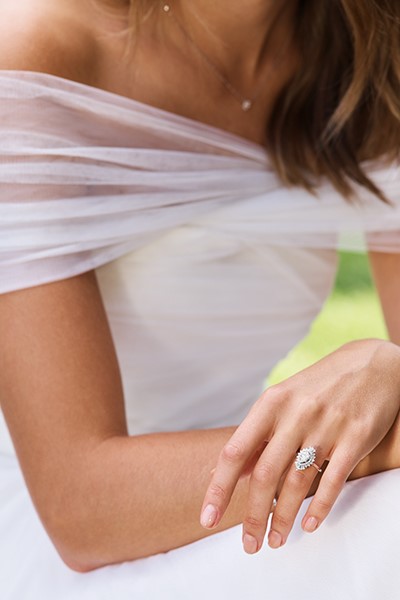
Even today, we tend to think of a white dress as being the obvious go-to for brides. This tradition actually started following the marriage of Queen Victoria to Albert of Saxe-Coburg. The Queen wore a white lace gown, and illustrations of the infamous dress were published widely across the country. Since then, white has been a popular choice for weddings in most European countries.
The veil
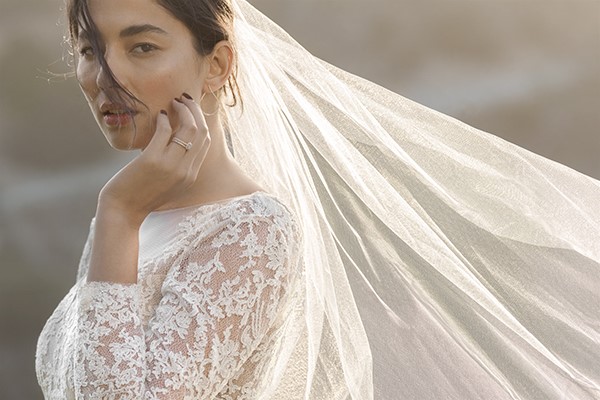
Before marrying for love became the norm, marriages were typically used as a business arrangement. Families could join assets, make peace or seal agreements by planning an arranged marriage between the two. Often, the bride and groom met for the very first time at the alter. Brides wore a veil that was lifted only after the ceremony was complete, so the groom didn’t have a chance to back out if he wasn’t happy with his choice of bride.
The bridesmaids
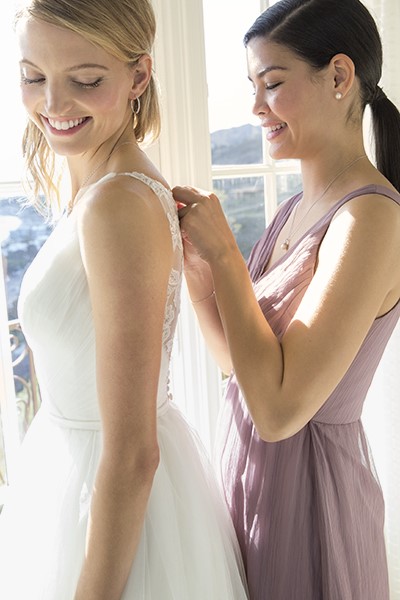
While bridesmaids are now a traditional addition to many wedding parties, the idea of having a group of girl friends standing next to the bride originally began as a way to ward off evil spirits. Bridesmaids were generally handmaidens of the bride, who dressed similarly to her in order to confuse jealous suitors and vengeful supernatural creatures.
The best man
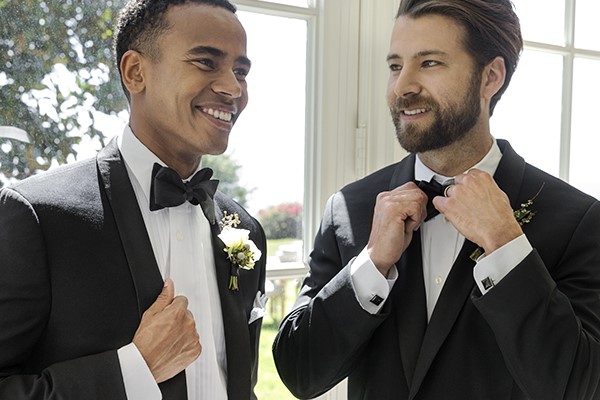
Did you know that the “best” part of “best man” originally referred to the groomsman’s swordsmanship? Back when marriages were still a business arrangement, it was important to have a good swordsman around to help find run-a-way brides or fend off disapproving family members.
The bouquet
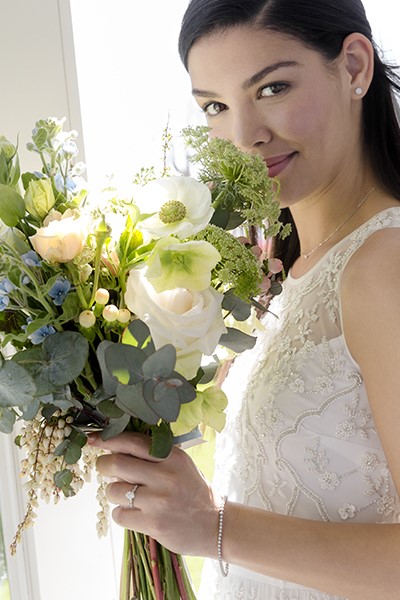
This is another wedding tradition based in the desire to prevent evil spirits from interfering. Rather than using flowers, bouquets in ancient times were stocked with aromatic herbs, spices and garlic to drive bad luck away from the soon-to-be-wife. Some historians also believe that bouquets may have been used to prevent catching the plague, as herbs were known as a common deterrent to this deadly disease.
The ring bearer
The tradition of having a young child present the wedding rings to the bride and groom on a pillow most likely comes from superstitions about fertility and innocence. The little one acts as a good luck charm for future children the couple may have together. The pillow is also said to represent the promise of “dreams coming true.”
The rice toss
Tossing rice at the end of a wedding ceremony is reminiscent of rain pouring over the couple, offering a symbol of prosperity, fertility, and overall good luck. Alternative tossing materials in ancient times included wheat, oats and other seeds that displayed the same message of growth.
The garter throw
Originating in England and France, it was common for guests to search for a piece of the bride’s dress to keep for good luck. The tradition of having the groom toss out the bride’s garter gave the guests an opportunity to be a part of the fun without the bride getting overrun by those looking to snatch up a piece of her wedding day outfit.
Making new memories
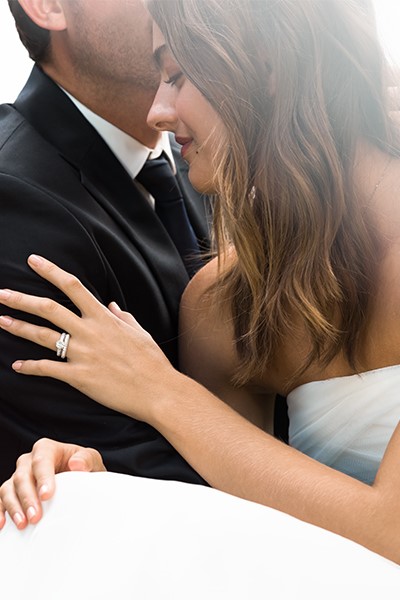
Whether you plan on adhering to all the old wedding traditions or would rather create new ones that are all your own, we hope to help make your special day even more special with the largest selection of high-quality bridal styles. Shop gifts for your bridesmaids today, or find the perfect something blue with our exclusive sapphire and gemstone styles. If you’re looking for groomsmen gifts or jewelry for the family of the bride and groom, we have options for every style and budget. Questions? Visit us online at ShaneCo.com or speak to a member of our no-pressure, noncommission staff at your nearest Shane Co. store. We’re here to help make your wedding perfect, every step of the way – because that’s what a friend would do.
